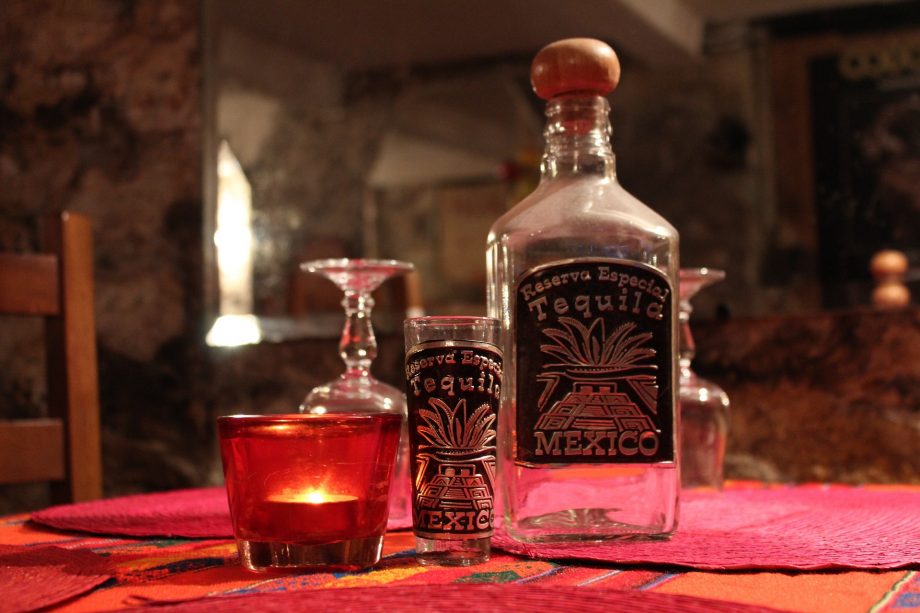Tequila…it makes you happy (or so the song by Terrorvision will have you believe). Yet so few spirits are as shrouded in as much myth and mystery as tequila. This intoxicatingly spicy, yet instantly recognisable Mexican agave spirit has been around for centuries, and despite its normal imbibe method of being consumed after a lick of salt, but before a squirt of lime, it is a very well respected tipple among top bartenders.
The tequila industry is worth more than a billion dollars and 7 out of every 10 litres of tequila produced in Mexico is exported for drinking abroad (the biggest consumers of tequila is the United States who drink almost 80% of exports). Tequila has maybe gained notoriety over the years with many people associating it with the worst hangovers imaginable and crazy nights out as a student! In reality tequila is a high quality spirit and up there with the best of them. One of the top tequila makers, Patron makes an extra añejo that will easily set you back over 300 dollars a bottle. Tequila deserves some respect so read on…
History of Tequila
Agave is a perennial succulent that is often mistaken for a cactus. Ancient Aztecs believed the agave plant to be sacred, using it for food and shelter, eating its flesh, drying its leaves and weaving it into clothing, floor mats, and thatch roofs. Many moons before tequila was even a glint in its creator’s eye, approximately 1000BC, the Aztecs were fermenting the sap of the agave plant into a form of beer, called pulque. This milky liquid was so important to Aztec culture that they worshiped two gods known for their relationship to booze. Pulque was imbibed during religious ceremonies as a way to communicate with these gods. The distillation of agave into mescals only came about in the 17th century, and to this day most producers are small family operations, distilling whatever agave plants grow in their part of the country, distributing their liquor to the local community.
While there are many theories regarding the commencement of agave distillation, a common understanding revolves around the Spanish invasion and primitive mud stills. The parched Spaniards couldn’t be without their brandy for too long, so when supplies began to run low, they improvised with mud and agave, essentially creating what we know today as mescal. (Remember: all tequilas are technically mescals, but not all mescals are tequilas – see below for more on that.)
Commercially distilled tequila began with the Cuervo family in 1758, followed later by the Sauza family in 1873. Rumour has it that Don Cenobio Sauza was responsible for identifying blue agave as the best agave plant for producing tequila. Tequila is protected by a geographic indicator, meaning it can only be legally manufactured in a designated region of Mexico. This geographic indicator is an internationally recognised certification designed to ensure the authenticity of culturally significant products, putting tequila in the same category as champagne, cognac and Comté cheese. Distilled in and around the town of Tequila in the state of Jalisco, tequila was once just another mescal. The difference now between tequila and mescal is a blurry one, but essentially tequila can only be made with Blue Agave, whilst mescal can feature up to 30 different types of agave. With tequila, the agave is cooked in industrial ovens before fermentation, but with mescal, it should be baked in a pit over wood fires (the source of its delicious smokiness).
Another reason tequila pipped mescal to the post was the location of Tequila (the town). It was situated near the large colonial city of Guadalajara which provided it a market for its mescal, that other varieties didn’t enjoy. With its production being backed by wealthy Spanish-descended families, it came as no surprise that the liquor found an export market when it was introduced to Americans at the Chicago World’s Fair in 1893. From then on its popularity, north of the border, continued to flourish, even being smuggled into the US during Prohibition. Today it is central to many a decent cocktail, recipes below.
The Worm
Contrary to popular belief, a true tequila does not contain a worm. It is only in tequila’s brother mescal.
George Clooney
George Clooney co-founded and later sold the brand Casamigos tequila, stating: “We love tequila–on the rocks, by the shot, and at times, straight from the bottle“. Tequila-filled nights with friends is how Casamigos was born. Their idea was to make the best-tasting, smoothest tequila whose taste didn’t have to be covered up with salt or lime. So they did”. Casaamigos make three types of tequila:
- Rests for 2 months. Crisp and clean with hints of citrus, vanilla and sweet agave, with a long smooth finish.
- Aged for 7 months. Soft, slightly oaky with hints of caramel and cocoa. It has a silky texture with a medium to long smooth finish.
- Añejo. Aged for 14 months. Pure and complex aroma, with soft caramel and vanilla notes. Perfect balance of sweetness from the Blue Weber agaves, with subtle hints of spice and barrel oak, with a lingering smooth finish.
Quality tequila
The ‘traditional’ means of drinking tequila, accompanied with lime and salt, may in part be due to the liquor being blended with other ingredients such as sugar cane, to make the manufacturing of the drink more cost efficient. ´Cheaper´ tequilas contain the mandatory minimum 51% blue agave and the remaining 49% is made up of cane sugars and other ingredients. Quality tequila is only ever made from 100% blue agave and should be the only type of tequila you buy or drink. Tequila that is made from 100% Blue Agave will say something like Tequila 100% de agave or Tequila 100% puro de agave. Like with most drinks it´s worth spending extra to buy the good stuff and aside from enjoying it more you are probably going to have a clearer head the next day provided you don´t go too overboard!
Tequila Cocktails
- The Margarita – Wipe a wedge of lime around the rim of a tumbler. Dip the rim into some sea salt. Fill a cocktail shaker with ice. Add 30ml lime juice, 30ml Cointreau, 60ml white tequila. Shake, shake, shake until bitingly cold. Then fill the tumbler with fresh ice and strain the drink over the top. Squeeze a wedge of lime into the glass, and toss it in too. Stir and drink.
- The Paloma – Fill a tall glass with ice. Add 60ml white tequila, 60ml pink grapefruit juice, 30 ml lime juice, 10 ml sugar syrup and a pinch of salt. Stir and top up with soda water or fizzy grapefruit drink.
- Tequila Sunrise – Fill a tall glass with ice. Add 50ml white tequila. Then carefully pour in 90ml fresh orange juice. DO NOT STIR. Add 10ml grenadine. The grenadine should sink to the bottom of the glass … giving you … a sunrise effect. Garnish with a slice of orange and a maraschino cherry.
- The El Niño – Muddle 6 wedges of lime in the bottom of a cocktail shaker with one hulled strawberry and 20ml sugar syrup. Fill up with ice. Add 60ml white tequila and a good dash of rosewater. Shake up a storm. Strain into an ice filled tumbler. Garnish with a rose petal or two.
Enjoy!


